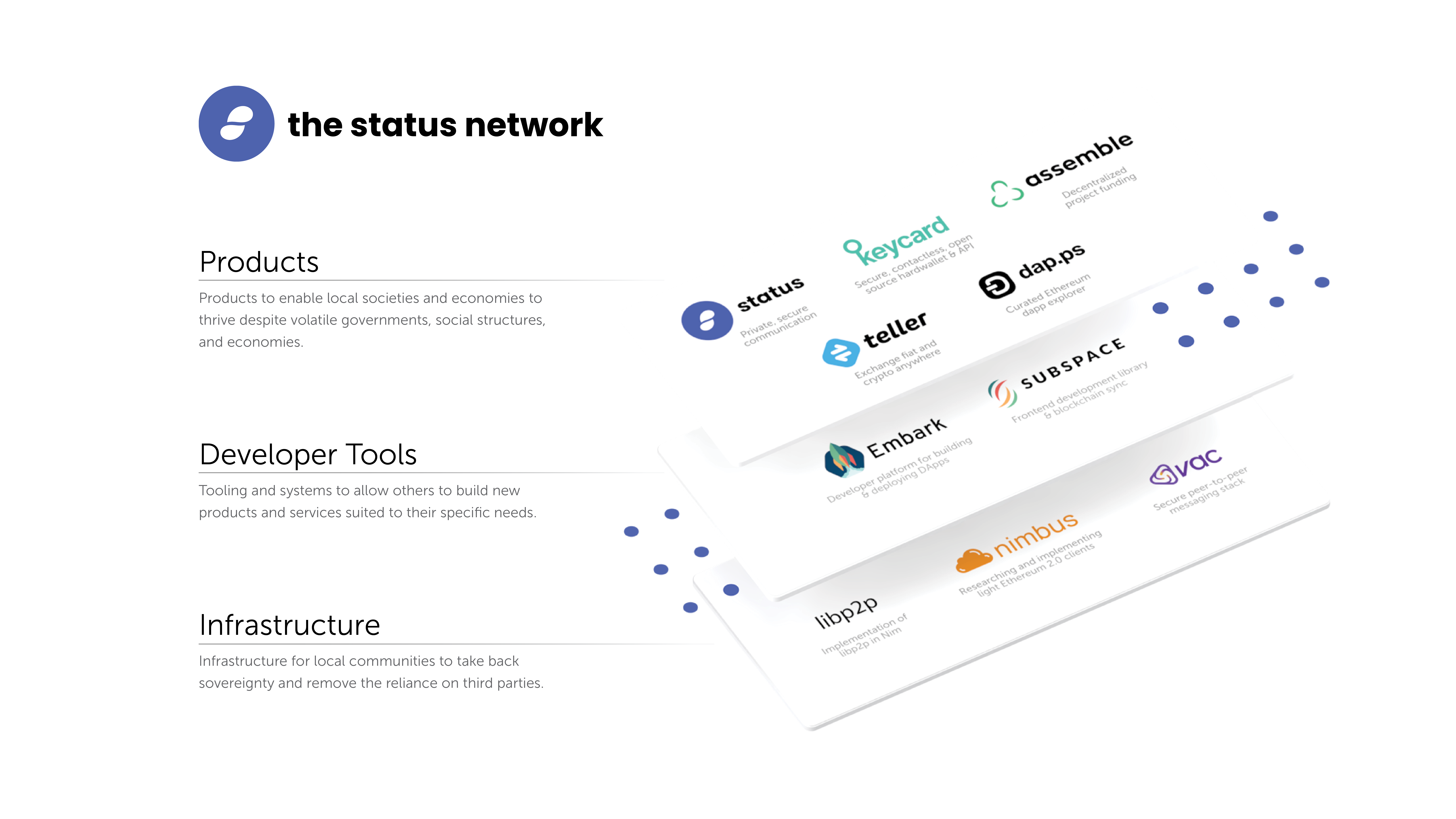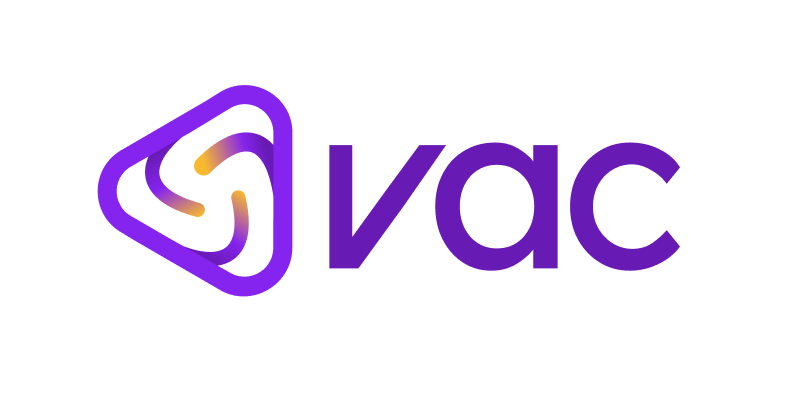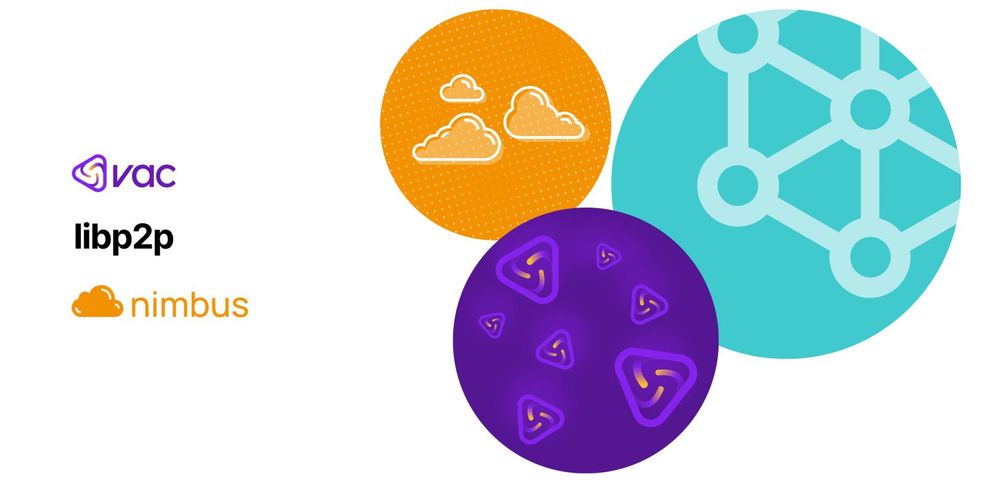In our journey building the Status App, we found several limitations to existing infrastructure that were preventing our goals of creating a great peer-to-peer social and financial tools. There were several issues at the web3 base layer that we needed to address to ensure that the Status App and Network projects work correctly, at scale, and effectively.
Instead of waiting for other teams to solve these issues, we picked up the baton and supported the effort.
Building at the infrastructure layer has distinct advantages for The Status Network projects. It allows us to build infrastructure that not only benefits a large community of developers, but can be designed in ways that specifically suit our needs. We have been able to prioritize development that aligns strategically with The Status Network vision.
Implementation goals
The work on infrastructure in The Status Network is meant to be implemented as soon as they are ready for release to have an immediate impact on Status Network projects, and decentralized projects across Ethereum and open source development as a whole.
Each project has a dedicated team of Status Network Core Contributors (along with collaborative contributors) with their own project timelines with updates at individual blogs to ensure projects are on track.

Vac

Vac is the product of a hard decision about using the whisper protocol for private messaging in the Status App. Whisper is simply unable to handle speed and scale required for a messaging app built for today’s end users. To address this, The Status Network has developed Vac, a new, scalable, fast, secure, peer-to-peer messaging stack.
Vac is modular and, like all of our work, open source. The modularity allows us to focus on specific needs for Status App, such as secure private messaging, data consistency across instances, establishing trusted connections, and more. https://vac.dev/vac-overview.
The Vac team is even working on Waku - a fork of Whisper as an iterative solution to the shortcomings of the protocol.
Nimbus

Nimbus is The Status Network’s contribution to Eth 2.0, ensuring that the Ethereum network can run on resource restricted devices to make mobile Ethereum access available for people using older mobile devices, as well as IoT devices. This expands the overall Ethereum footprint, as well as gives Status Network projects such as the Status App, Dap.ps, Teller, and future end-user products the ability to scale blockchain tech to the speeds that modern mobile users expect.
Nimbus is written in Nim, an efficient, general-purpose systems programming language that compiles to C. This was selected in order to move fast and implement Nimbus with well-tested and documented tools and resources.
We are creating Nimbus as an Ethereum sharding client that expands upon the reach of clients like Geth or Parity to include more devices as nodes that can participate in a global decentralized vision of Eth 2.0. We view this as a critical contribution to growing the reach of tech and applications around The Status Network, Ethereum, and decentralized computing.
Libp2p
https://github.com/status-im/nim-libp2p
Libp2p is an existing project outside of The Status Network, but the mission of libp2p and the value it brings to projects in the Network are essential. Thus, The Status Network has a collaborative team working with libp2p to build it out to better serve peer-to-peer network infrastructure.
Decentralized peer-to-peer networks have some assumptions built into them that are incompatible with our mission of total security and privacy. One problem that legacy peer-to-peer protocols have is that in order to find another node on a decentralized network, that node needs to broadcast to a central host that it is available for connection, and the central host manages the connections. That’s not private, secure, or censorship resistant enough for Status Network standards.
To solve this, The Status Network libp2p team is developing ways for peers on the network to broadcast and connect safely, securely, and through a variety of protocols to maximize good connections, minimize bad actors, and upgrade speed and safety across the protocol. Our focus on upgrading libp2p is for Nimbus to run securely and at scale, but the result will be a more private internet for anyone relying on libp2p.
Visit the libp2p home to see the other ways that libp2p is building libraries for better peer-to-peer networking https://libp2p.io/.
Infrastructure is Key to Status Network Goals
Building at the infrastructure layer allows The Status Network to gain unparalleled understanding of how decentralized infrastructure works and can be leveraged with our Developer Tools and Products up the Network stack. This gives our work more secure footing for future technology changes, and provides insight into how we can leverage other Status Network goals into our offerings.
The infrastructure we build is entirely open source and available as a public good. This infrastructure plays a critical role in building other projects further up the stack. They pave the way for new dapps, payment networks, SNT use cases, or whatever talented engineers can create.
Learn more about the Status Network and the infrastructure we build at statusnetwork.com
